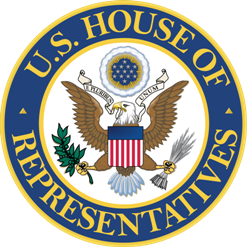Could Democrats Lose the Presidency and Make Gains in the US House?
It has been 120 years since the last time a party lost the White House and still netted the 30 seats Democrats need to win back the chamber in 2016

That report found that historically the party losing the presidency has made gains in the U.S. Senate nine times over the last century – but never large enough to overcome the Democratic Party’s current deficit in the chamber.
Democrats are also hoping for double-digit gains in the U.S. House this November – optimistic that a combination of high turnout among its key demographics in a presidential election cycle, a controversial nominee at the top of the GOP ticket, and more than twice as many open GOP seats due to retirement can all work in the party’s favor.
Democrats have netted U.S. House seats in four of the last five presidential election cycles – winning the presidential popular vote in each of these.
At first blush, with a general dearth of competitive districts nationwide, it appears far-fetched to contemplate Democrats could make up significant ground on the Republicans in the chamber if Hillary Clinton is defeated at the ballot box.
And yet, there have been numerous examples of cycles in which the party of the losing presidential nominee still gained seats in the nation’s lower legislative chamber.
Such an electoral outcome has happened seven times since 1900 including five times over the last 15 cycles since 1956 and twice in the last quarter-century.
Most strikingly, when Richard Nixon narrowly lost the popular vote to John Kennedy in 1960, his party rebounded from very large losses two years prior to net 22 seats despite a losing nominee at the top of the ticket.
The GOP also netted 19 seats in 1916 when Charles Evans Hughes came up 17 Electoral College votes shy of defeating Woodrow Wilson.
Republicans also netted nine seats when Bill Clinton won the White House in 1992.
Democrats made more modest gains during the election of William Howard Taft in 1908 (+5 seats), Dwight Eisenhower in 1956 (+2), George H.W. Bush in 1988 (+2), and George W. Bush in 2000 (+1).
Of course, this is not the easy recipe for success. It has been much more common for the party of the winning presidential candidate to not only gain seats, but to do so in substantial numbers.
Since 1900, more than half of the presidential election cycles saw the party winning the White House net at least a dozen U.S. House seats along the way (in 16 of 29 cycles, or 55 percent), although only once since 1988:
- 1900 (William McKinley): +12 Republican
- 1904 (Teddy Roosevelt): +41 Republican
- 1912 (Woodrow Wilson): +61 Democrat
- 1920 (Warren Harding): +63 Republican
- 1924 (Calvin Coolidge): +22 Republican
- 1928 (Herbert Hoover): +32 Republican
- 1932 (Franklin Roosevelt): +97 Democrat
- 1936 (Franklin Roosevelt): +12 Democrat
- 1944 (Franklin Roosevelt): +20 Democrat
- 1948 (Harry Truman): +75 Democrat
- 1952 (Dwight Eisenhower): +22 Republican
- 1964 (Lyndon Johnson): +37 Democrat
- 1972 (Richard Nixon): +12 Republican
- 1980 (Ronald Reagan): +34 Republican
- 1984 (Ronald Reagan): +16 Republican
- 2008 (Barack Obama): +21 Democrat
It was much more common during the 19th Century to see double-digit partisan fluctuations in U.S. House seats – a major party did so (whether it won or lost the White House) in all but three presidential election cycles since the beginning of the two-party system in 1828.
The party losing the White House made double-digit gains five times: the Whigs in 1836 (+25 seats, 10.3 percent of the chamber), the Democrats in 1868 (+20 seats, 8.2 percent) and 1896 (+31 seats, 8.7 percent), and the Republicans in 1884 (+23 seats, 7.1 percent) and 1892 (+38 seats, 10.7 percent).
Democrats need to net 30 of the 435 seats to win back control of the chamber in 2016 (6.9 percent) – a feat last achieved while losing the presidency 120 years ago in 1896.
The winner of the presidential election saw his party make double-digit gains 10 times from 1828 through 1896: Democrats (Jacksonians) in 1828 (+23 seats, 10.8 percent), 1832 (+17 seats, 7.1 percent), 1852 (+28 seats, 12.0 percent), and 1856 (+50 seats, 21.1 percent), the Whigs in 1840 (+33 seats, 13.6 percent), and Republicans in 1864 (+50 seats, 25.9 percent), 1872 (+64 seats, 21.9 percent), 1876 (+30 seats, 10.2 percent), 1880 (+19 seats, 6.5 percent), and 1888 (+25 seats, 7.5 percent).
Follow Smart Politics on Twitter.

1. Per (the now-defunct) Congressional Quarterly in its initial tabulation, Nixon edged out Kennedy in the popular vote by approximately 60,000 votes – not by throwing in the alleged “graveyard” votes in IL and TX, but…(a 2012 piece entitled “Did JFK Lose the Popular Vote?” by Sean Trende for RCP offers a great insight regarding this).
2. If a massive number of voters choose to cast a visceral across-the-board anti-status quo vote (much like the “Brexiters” did against the Conservative political barons, London bankers, and Brussels EU bureaucrats), then, sure, a “Drumpf” victory would no doubt be accompanied by a D majority in the H of Representatives, with a returning Speaker Pelosi serving as a rational counterweight against his populist, demagogic excesses.